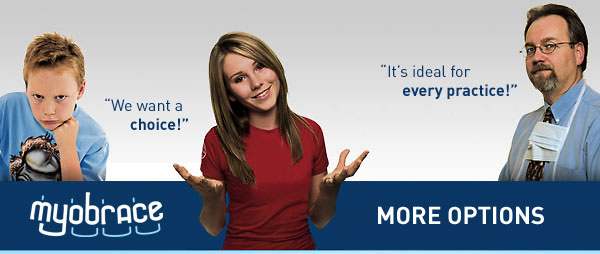


|
In this Issue
|
||||||||||||||||||||||||||||||||||||||||||||||||
|
From the CEO Hello, With the MRC Systems, you can be on your way to increasing the number of patients you treat successfully. Profit from your experience with early treatment, habit correction, cosmetic alignment and TMJ treatment by following these simple steps: Spend 5 minutes watching each of the the instructional videos from the MRC Complete Systems CD-ROM. (TRAINER System™, MYOBRACE System™ and TMJ System™). If you have broadband internet, you can also view these from our website. It is important to find a time when you can give 100% attention to the subject, as there is vital information condensed into each of these videos. It takes only 5 minutes for each subject. Identify the potential uses in your practice. After watching the video you will recognise the potentialities of the MRC Systems. They are easy to implement and now it is up to you to choose patients in your practice who already have a need for this treatment. Most growing children have developing malocclusion and poor facial growth. Choose 2-3 for the TRAINER System™. The appliance selection can be done based on: Read the T4K™ manual of procedures to obtain an overview of the different applications of the TRAINERS - use right column as a subject guide. Download the manual, check the T4K™ Clinical Applications from the website or watch the MRC Complete Systems CD-ROM for more detailed information on the entire system. Select the best case to start with the TRAINER System™. It is best to initially start with mild cases and motivated patients and parents. Start with the T4K™ if a child is in the mixed dentition stage with signs of a developing malocclusion. Case criteria: Mild crowding, open bite, poor mouth posture, tongue thrust swallow narrow maxilla. Gain more patients by showing each patient information from the CD-ROM, DVD or brochure in your waiting room. This will introduce the concept to many interested parents. Remember to tell the parents that the treatment goal is NOT to eliminate the malocclusion (although this is possible in some cases), but to decrease its severity, improve facial growth, decrease the need for extractions, and to improve the stability of any future orthodontic treatment. If used as directed you will obtain routine success. Many orthodontic problems can be eliminated with an early start with the T4K™. Regards, |
||||||||||||||||||||||||||||||||||||||||||||||||
|
"Is there scientific evidence in the literature supporting and demonstrating the modus operandi and effect produced by the TRAINER? What about the MYOBRACE®?" The effect produced by the TRAINER is similar to other functional appliances designed to stimulate mandibular growth (Bionator, monoblock, twin-block, etc). These appliances force the mandible into an edge to edge bite. Thus, while the appliance is worn, it produces a stretching of the lateral pterigoid muscle. Once the appliance is taken out of the mouth, the lateral pterigoid enters in hyper-contractile movements, which makes the condyle move forward and backward for a certain time. This was explained by Petrovic and Stutzman (1994, 1990). These little movements of the condyle are not noted by patients, who generally interpret this as a discomfort to achieve a proper occlusion immediately after he takes out the appliance. Such movements of the condyle stretch the retrodiscal pad (known as Zenckel’s zone), where the blood vessels release nutrients and growth factors into the condyle, producing the mandibular growth that we know is created by these appliances. Best regards, |
||||||||||||||||||||||||||||||||||||||||||||||||
|
Throughout the world I am frequently recieving questions concerning the MRC appliances from both Orthodontists and Dentists. This month I have compiled a list of the top 10 most commonly asked questions. 1. How successful is the appliance? Does it really work? Answer. 2. What if the child refuses to wear the appliance? Answer. 3. What do I do if the TRAINER falls out of the child's mouth during the night? Answer. 4. It is not going to work. Answer. 5. Are there known harmful or side-effects of the TRAINER? Answer. 6. Are the Myofunctional products registered with health authorities and is there data on the type of material used in them? 7. What exactly is the coloring agent? Do we have proven evidence of non-toxicity? Non-allergy of these substances? Answer. 8. Colouring is fading away over time and patient/child is swallowing the colouring agent. Does this happen? Answer. 9. Suggested TRAINER use is for at least 6-8 months each phase. How long does the TRAINER (T4K™) last if used according to instructions? For instance, does a bruxism case need more TRAINER? Answer. 10. In cases that the child's arches are considerably different from the shape of TRAINERS ideal arches (i.e. narrow maxilla) should I still use the TRAINER as my first treatment option? Answer.
Regards, |
||||||||||||||||||||||||||||||||||||||||||||||||
|
|
||||||||||||||||||||||||||||||||||||||||||||||||
Establishing Nasal Breathing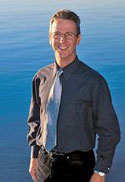
Over the years I have noticed an increasing tendency for children to show evidence of chronic or habitual mouth breathing. This has a negative effect not only on the development of the jaws the shape of the developing cranium and the occlusion but also on the general health of the child.
Regards, |
||||||||||||||||||||||||||||||||||||||||||||||||
|
|
||||||||||||||||||||||||||||||||||||||||||||||||
Upcoming Training Events
|
||||||||||||||||||||||||||||||||||||||||||||||||
Share Your Advice 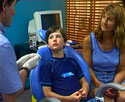
Patient Compliance is an important subject when it comes to successful treatment with the TRAINER System™. In Issue 4, Dr German Ramirez wrote an article on Patient Compliance, which was discussed further in Issue 3 of his MRC Newsletter. This month, we are extending an invitation for you to step forward and share your advice and methods with readers on how to achieve Patient Compliance. We ask that submissions remain between 500 to 1000 words and be sent via email along with any supporting material to the eNewsletter Editor. |
||||||||||||||||||||||||||||||||||||||||||||||||
| Your Feedback
Your feedback is appreciated. If you have any views or responses please contact us with any feedback or ideas you have to improve this new service. |
||||||||||||||||||||||||||||||||||||||||||||||||
|
"The TRAINER is enjoying great popularity in my clinic. Dr Masashi FUKUOKA |
|
The 3 page Patient Information Binder is an effective resource for every practice. Order through your local representative. |
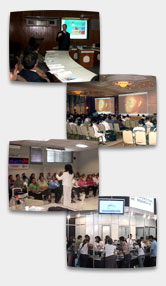
MRC's Events Gallery is continually growing as we attend events all over the world informing professionals about the importance of MYOFUNCTIONAL RESEARCH. |
|
Myobrace.com is a new, informative website about the MYOBRACE® and all it's features. |
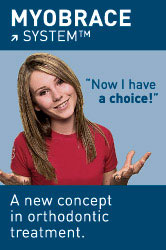 |
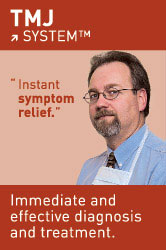 |
 |
|
Published by: MRC CEO & Founder: Editor: Jill Steptoe |
|
|
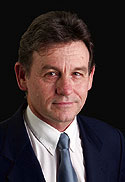
 Scientifically Speaking
Scientifically Speaking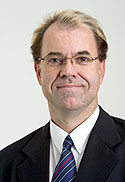 MRC Global - A World Perspective
MRC Global - A World Perspective

